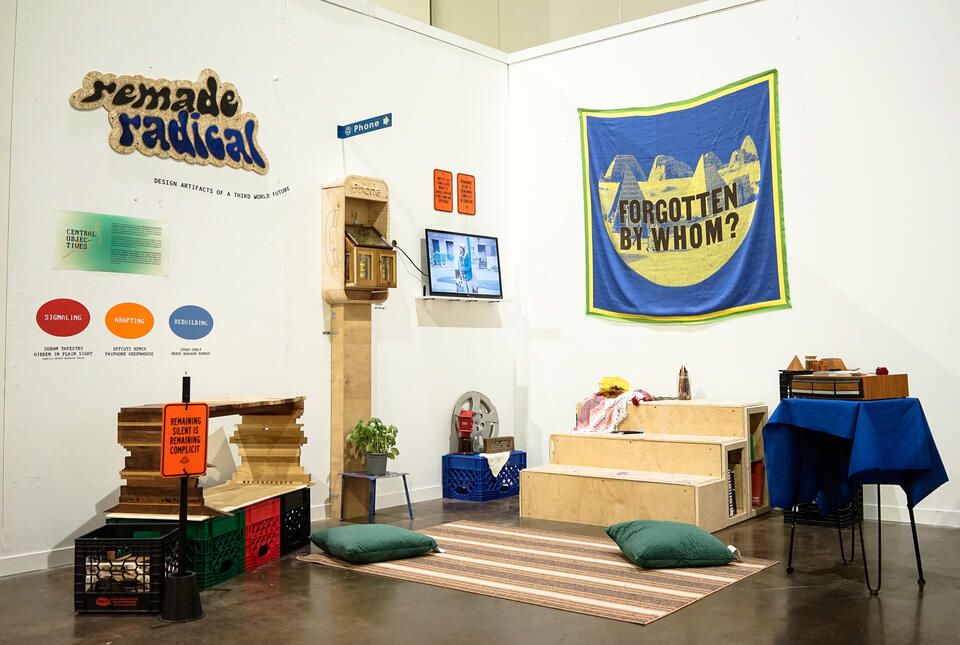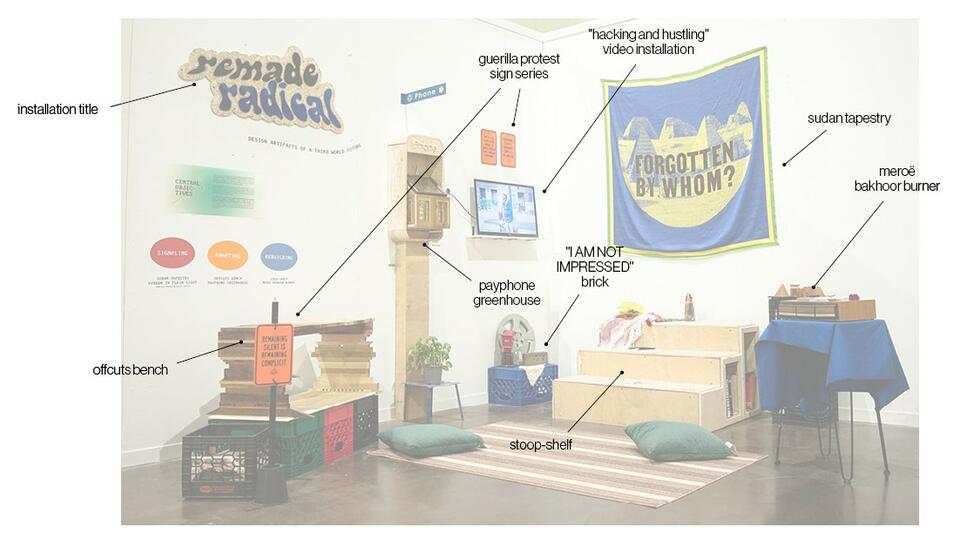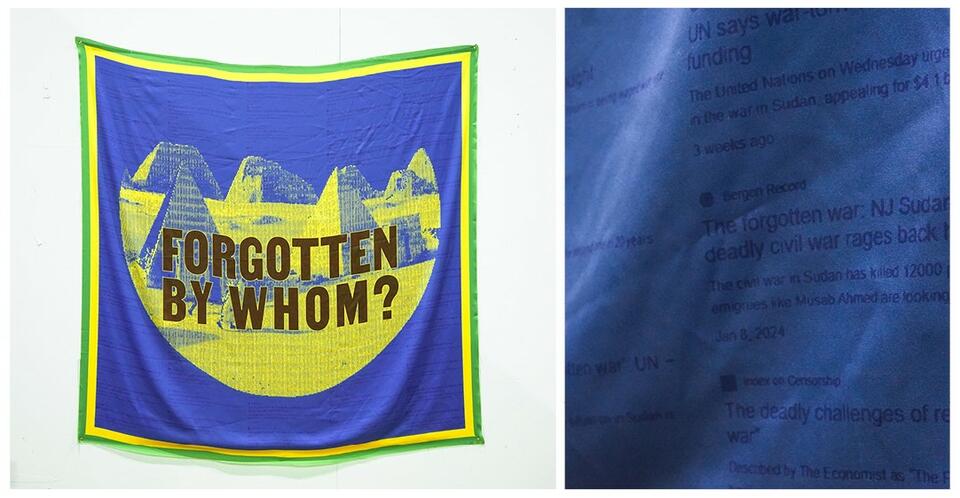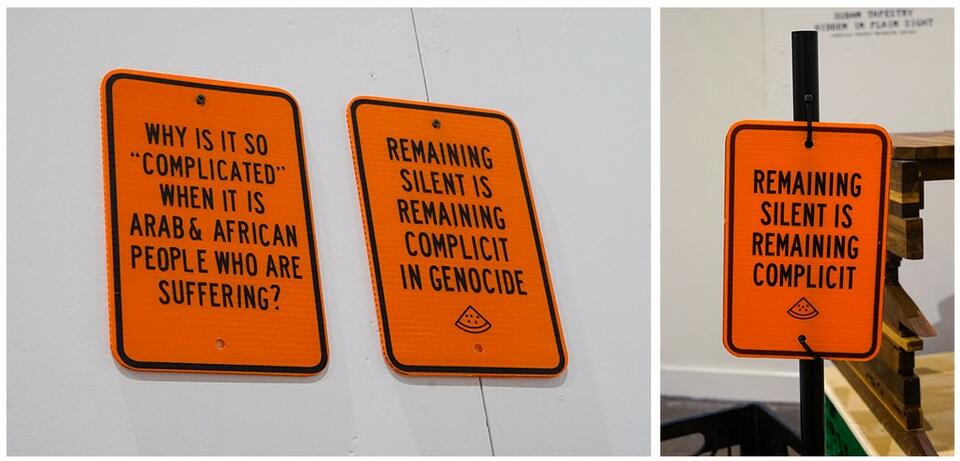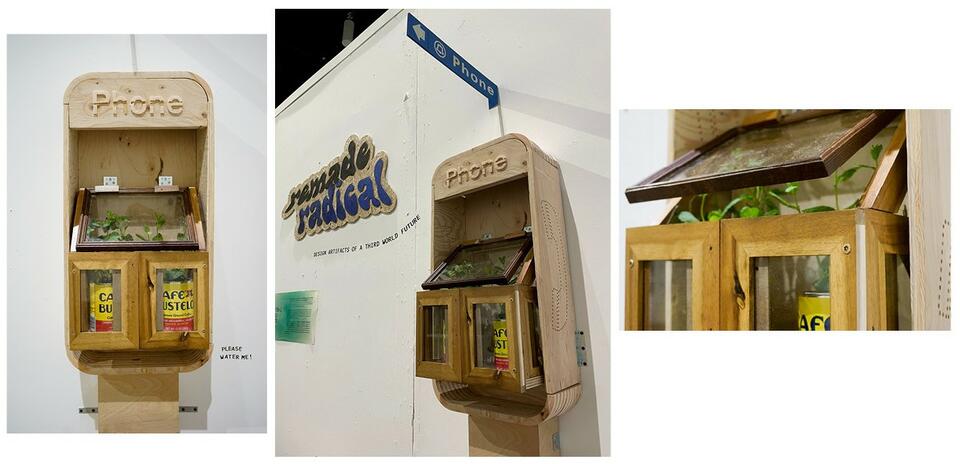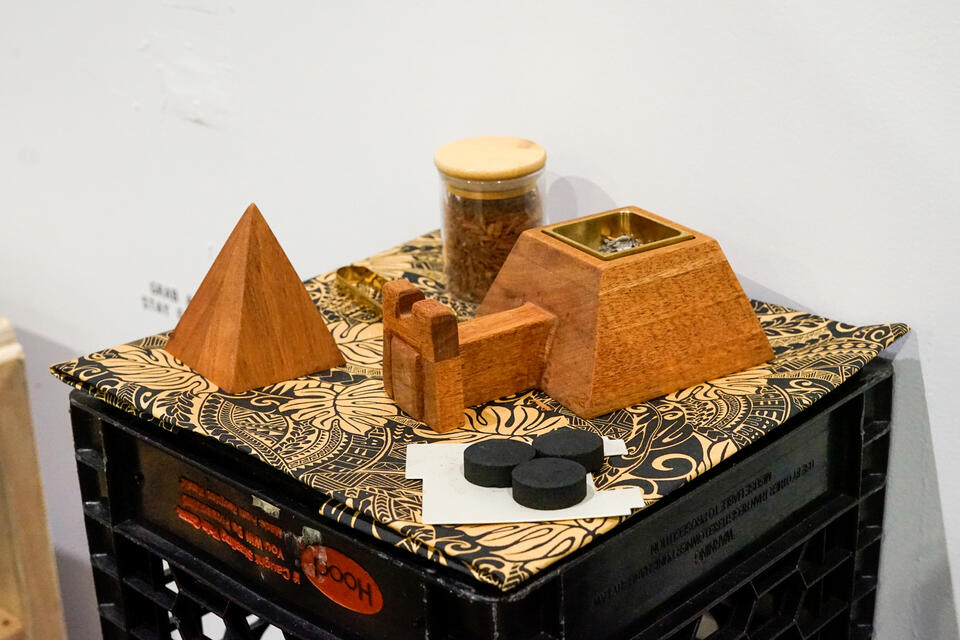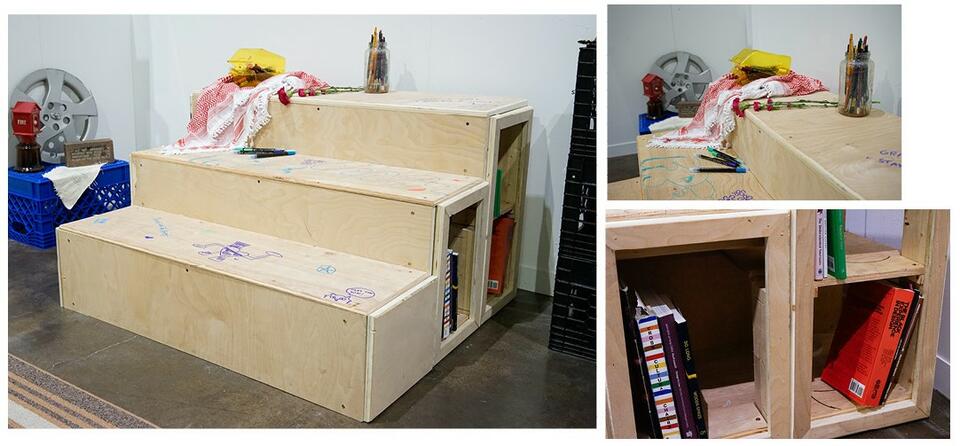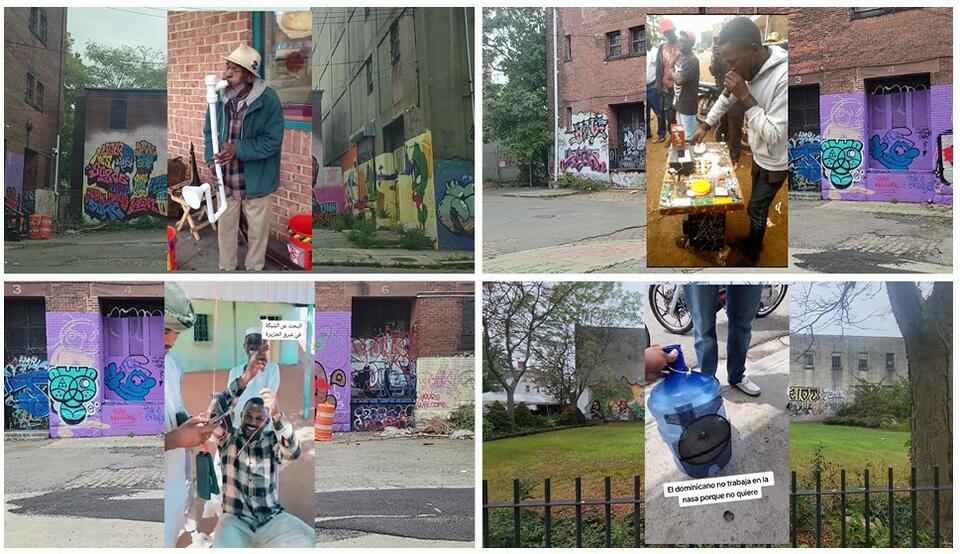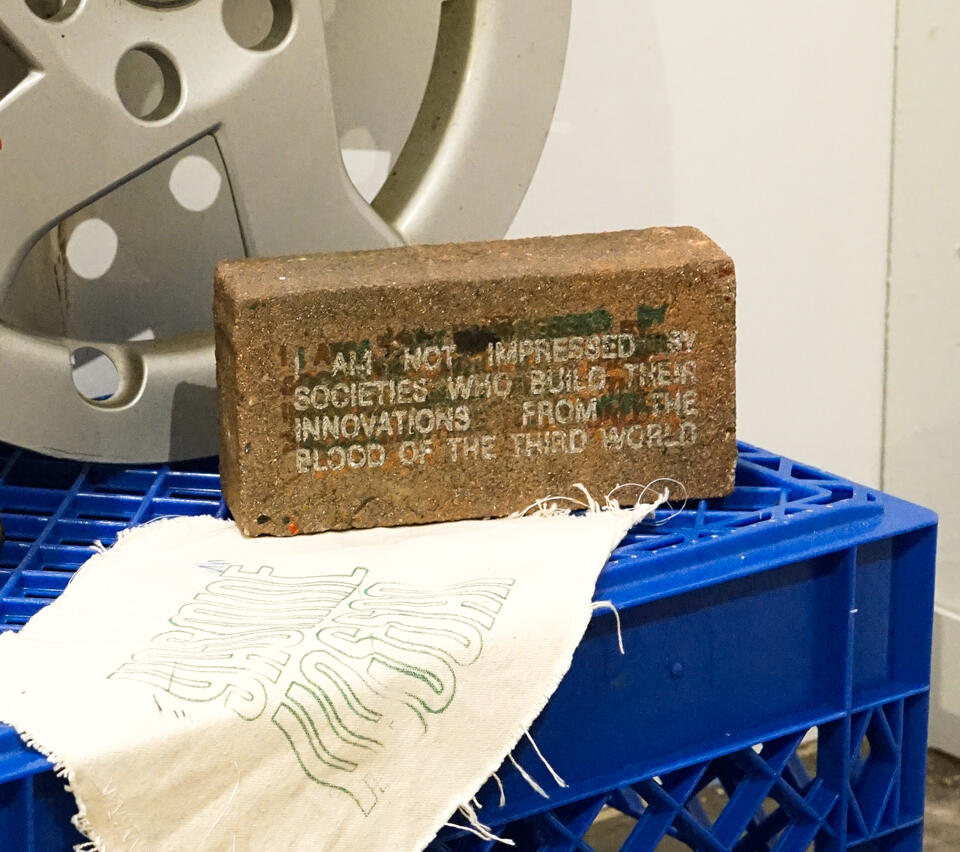Yasmine Awad Hassan
Remade Radical: Design Artifacts of a Third World Future
Yasmine Hassan is an interdisciplinary artist whose work ranges from large-scale carpentry and fine woodworking to physical computing and digital illustration. Through these diverse media, she is interested in uncovering forgotten histories, empowering marginalized people to reshape their own environments, and collaboratively creating “for us, by us” spaces and initiatives where Black and brown youth are able to thrive while still being themselves.
Yasmine has logged nearly as many hours working in the woodshop as she has spent thinking about her family in Sudan this past year. She believes that Palestine will be free in our lifetime.
Remade Radical draws inspiration from the existing practices of informal making and reuse prevalent in Black and brown immigrant and working-class communities in order to reimagine maker culture and the field of industrial design as a whole. These improvisational practices–known by a number of different names across the globe, including jua kali (Kenya), gambiarra (Brazil), jugaad (India), and even ghetto engineering (United States)–are oftentimes viewed as inevitable byproducts of waste and artifacts of besiegement from the world's wealthiest nations. Yet within these practices lies a tangible counterpoint to the material excess and rampant consumption made possible through the continued exploitation and subjugation of the Third World. This work aims to position “hacking and hustling” as a crucial alternative to the Western design and consumption practices that have slowly destroyed our world since the onset of the industrial revolution.
These ways of making, and the cultural ethos from which they stem, are our map forward in the midst of environmental collapse, ongoing neocolonial violence, and the persistent complicity of the West in the wake of it all. In an effort to describe and advocate for this vision of a radically different future through the lens of design, this thesis book proposes a series of working typologies and frameworks in order to contextualize and illustrate these relevant making practices. Furthermore, it serves as the companion text for a body of designed objects whose materialities, processes, and/or forms are tangibly informed by the construction methods and cultural motivations of these informal practices. This project will culminate in an exhibition designed to serve as a prototypical “third space” and temporary ecosystem to materially support local Black and brown artists and community collaborators.
EXHIBITION IMAGES
